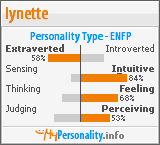So Faithful a Heart: The Love Story of Nancy Storace and Wolfgang Mozart on Lulu.com
>> Sunday, November 8, 2009
My novel, So Faithful a Heart: The Love Story of Nancy Storace & Wolfgang Mozart is published and available for purchase on Lulu.com! Go HERE to purchase your copy!
The following is the concert aria, Ch'io mi scordi di te...Non temer amato bene, K. 505 that Mozart composed for Nancy as a farewell gift to sing at her final Viennese concert in February of 1787. Mozart composed an obbligato piano part, which he played, and he entered in his thematic catalog, Für Mlle. Storace und Mich. The text was taken from an aria in his opera, Idomeneo.
Mozart's manuscript copy of Ch'io mi scordi di te is dated December 26, 1786, and the text is from an addition to Idomeneo, Act II, Scene 1, by Abate Giambattista Varesco. The piece includes an obbligato part for keyboard, which Mozart no doubt played at the premiere sometime in February 1787. Most interestingly, the obbligato contains no Alberti figures; what few of these appear in the aria are given to the strings.
The recitative of K. 505 was originally part of another scene and aria, "Non più, tutto ascoltai," K. 490, which was replaced the original opening number of Act II of Idomeneo for a private performance in March 1786. In the scene and aria for Storace, Mozart leaves out much of the recitative text and creates a more concentrated setting with characteristics more common to his chamber music. For instance, the modulation from the G minor of the recitative to the E flat major of the aria begins very early in the recitative.
The aria is marked Rondo, a form that was fashionable at the time in vocal composition. The beginning Andante segment is actually in ternary form and is introduced by the orchestra. The central, contrasting section begins at "Tu sospiri?" and modulates to the dominant. After the return of the soprano's opening lines, Mozart prepares for the shift to the faster, second part of the aria in an unusual and imaginative way. Virtually unaccompanied outbursts from the soprano ("sempre il cuorsaria," "Stella barbare," and "stella spietate!") alternate with rapid flourishes on the piano, creating an atmosphere of expectancy that allows for the most startling change in rhythm. The ensuing Allegretto is a serial rondo (ABACADA Coda). In the coda, Mozart produces the opposite of the effect he achieved in the transition when sixteenth-note scale passages in the soprano slow to eighth and then to half notes.
The following recording features the wonderful mezzo-soprano, Cecilia Bartoli.
For twenty-six years Nancy Storace kept Wolfgang Mozart's love letters locked away inside her desk. They were all she had left of him after his unexpected death, all that history would require as proof of the love they'd shared.
So Faithful A Heart is a story of intrigue and passion, of joy and despair, of courage and hope, and it is a story of how great love often exacts a great price.The following is the concert aria, Ch'io mi scordi di te...Non temer amato bene, K. 505 that Mozart composed for Nancy as a farewell gift to sing at her final Viennese concert in February of 1787. Mozart composed an obbligato piano part, which he played, and he entered in his thematic catalog, Für Mlle. Storace und Mich. The text was taken from an aria in his opera, Idomeneo.
Mozart's manuscript copy of Ch'io mi scordi di te is dated December 26, 1786, and the text is from an addition to Idomeneo, Act II, Scene 1, by Abate Giambattista Varesco. The piece includes an obbligato part for keyboard, which Mozart no doubt played at the premiere sometime in February 1787. Most interestingly, the obbligato contains no Alberti figures; what few of these appear in the aria are given to the strings.
The recitative of K. 505 was originally part of another scene and aria, "Non più, tutto ascoltai," K. 490, which was replaced the original opening number of Act II of Idomeneo for a private performance in March 1786. In the scene and aria for Storace, Mozart leaves out much of the recitative text and creates a more concentrated setting with characteristics more common to his chamber music. For instance, the modulation from the G minor of the recitative to the E flat major of the aria begins very early in the recitative.
The aria is marked Rondo, a form that was fashionable at the time in vocal composition. The beginning Andante segment is actually in ternary form and is introduced by the orchestra. The central, contrasting section begins at "Tu sospiri?" and modulates to the dominant. After the return of the soprano's opening lines, Mozart prepares for the shift to the faster, second part of the aria in an unusual and imaginative way. Virtually unaccompanied outbursts from the soprano ("sempre il cuorsaria," "Stella barbare," and "stella spietate!") alternate with rapid flourishes on the piano, creating an atmosphere of expectancy that allows for the most startling change in rhythm. The ensuing Allegretto is a serial rondo (ABACADA Coda). In the coda, Mozart produces the opposite of the effect he achieved in the transition when sixteenth-note scale passages in the soprano slow to eighth and then to half notes.
The following recording features the wonderful mezzo-soprano, Cecilia Bartoli.





























1 comments:
It's a tribute not only to their love, but to Nancy's and Wolfgang's professionalism that they were able to get through that performance without collapsing emotionally. I love the partnership of the piano and the vocal part. I can just see them performing this. What a gift.
Post a Comment